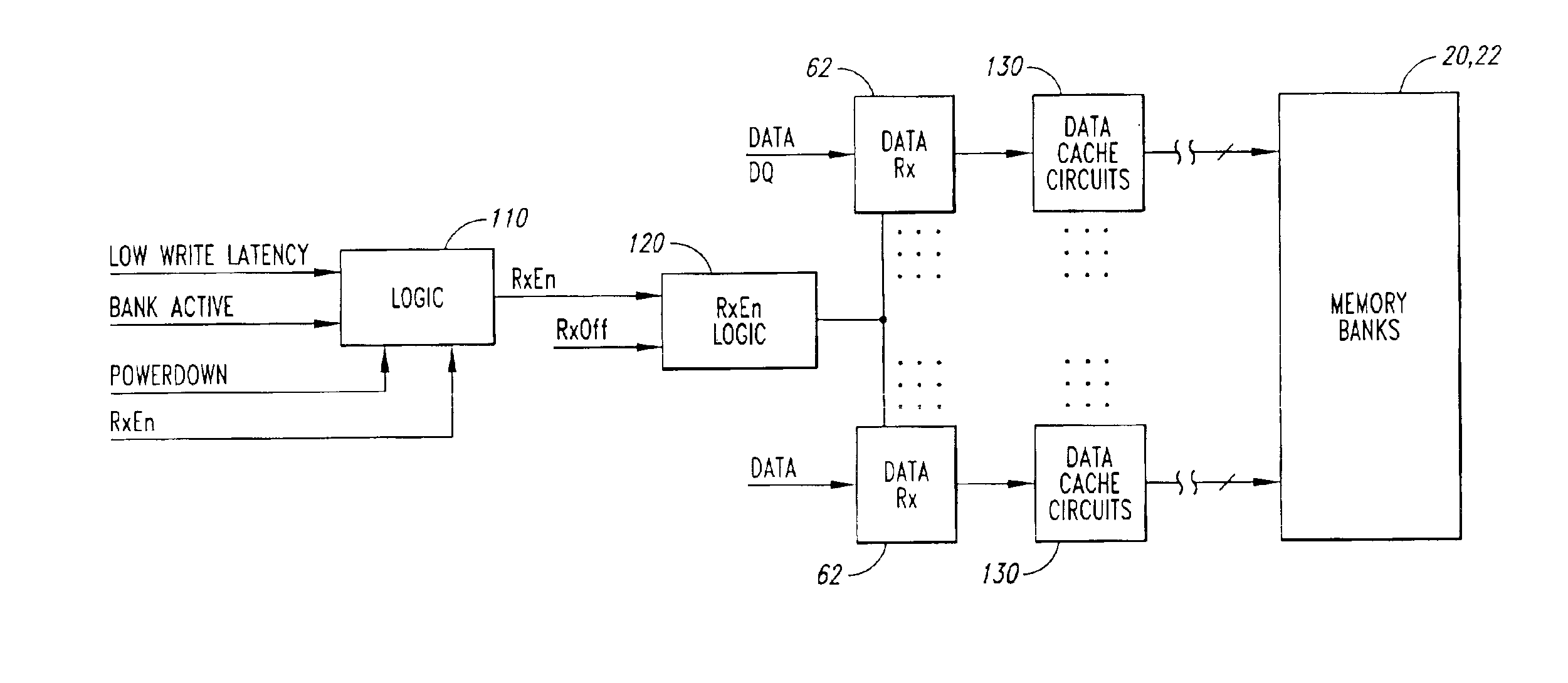Memory device and method having low-power, high write latency mode and high-power, low write latency mode and/or independently selectable write latency
a memory device and memory technology, applied in the field of dynamic random access memories, can solve the problems of increasing the power consumption of memory devices in portable personal computers, affecting the length of time they can be used, and the power consumption of memory devices can be important, so as to minimize increase the write latency of memory devices, and avoid increased write latencies
- Summary
- Abstract
- Description
- Claims
- Application Information
AI Technical Summary
Benefits of technology
Problems solved by technology
Method used
Image
Examples
Embodiment Construction
[0014]FIG. 1 is a block diagram of a conventional synchronous dynamic random access memory (“SDRAM”) 2 that can utilize a dual-power system according to one embodiment of the invention. However, it will be understood that various embodiments of the present invention can also be used in other types of DRAMs or other types of memory devices.
[0015]The operation of the SDRAM 2 is controlled by a command decoder 4 responsive to high-level command signals received on a control bus 6. These high level command signals, which are typically generated by a memory controller (not shown in FIG. 1), are a clock enable signal CKE*, a clock signal CLK, a chip select signal CS*, a write enable signal WE*, a row address strobe signal RAS*, a column address strobe signal CAS*, and a data mask signal DM, in which the “*” designates the signal as active low. The command decoder 4 includes a plurality of input buffers or command receivers, collectively designated by reference numeral 10, through which th...
PUM
 Login to View More
Login to View More Abstract
Description
Claims
Application Information
 Login to View More
Login to View More - R&D
- Intellectual Property
- Life Sciences
- Materials
- Tech Scout
- Unparalleled Data Quality
- Higher Quality Content
- 60% Fewer Hallucinations
Browse by: Latest US Patents, China's latest patents, Technical Efficacy Thesaurus, Application Domain, Technology Topic, Popular Technical Reports.
© 2025 PatSnap. All rights reserved.Legal|Privacy policy|Modern Slavery Act Transparency Statement|Sitemap|About US| Contact US: help@patsnap.com



